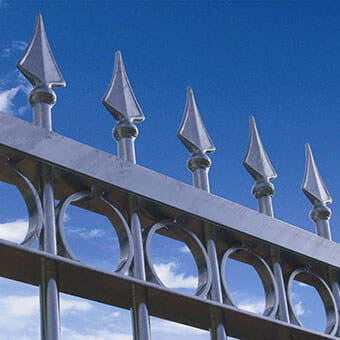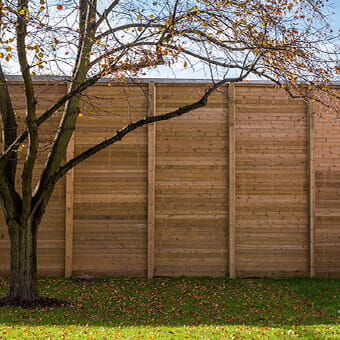Our other sites:
There is much literature available in the understanding of LPS 1175 certification and what the classifications mean, where they should be specified, and so on. However, the installation of LPS 1175 certified fencing systems has not been widely discussed. Here, we’ll look at the importance of correct fence installation for certified fencing systems, and how it differs from standard security fencing installations.
At Jacksons, we continuously stress the importance of correct installation, offering our fencing installation services for our steel fencing, gates, and access control measures, as well as commandeering a network of over 250 independent fencing installers for domestic installations. A high quality fence is only as effective as its installation; even the best security fencing can fail to perform if it's not installed correctly, compromising its strength, durability, and resistance to intrusion. Proper installation ensures the fence operates as designed, providing the protection and peace of mind you expect.

Jakoustic Class 3 C5
When it comes to certified fencing, which is protecting against forced entry or other risks, correct installation is more important than ever. The rise of LPS 1175 fencing being available to buy online rings alarm bells – a process that is so far removed from our personal quoting and security-centric advice and procedures, which involves tailoring fencing to a site and scrupulous quality control checks during manufacturing, storing, and delivery; all key aspects to uphold the standard. When purchasing online, there’s often no product expert oversight to identify potential issues or ensure the customer is aware that installation instructions and drawings are provided, understood, and need to be followed. This oversight is crucial because, without installation drawings, the manufacturer assumes liability. Conversely, if the drawings are supplied but not adhered to during installation, the system cannot be certified, shifting liability to the installer. In addition, the customer or client who has agreed to have the system installed may also have a duty to understand the conditions attached to the certification of products and systems, especially if operating within regulated sectors where compliance with LPS 1175 or other standards is mandated.
Installing LPS 1175 fencing
Installing LPS 1175 certified fencing systems requires adherence to specific procedures to ensure the security performance intended by the certification. LPS 1175 (Loss Prevention Standard) focuses on resistance to forced entry, so the installation process must maintain the integrity of the certified system. When specifying, ordering, or installing LPS 1175 fencing, consider the following:
1. Site Preparation
2. Product Compliance
3. Foundation Installation
4. Panel Installation
5. Gates and Access Points
6. Inspection and Testing
7. Documentation
8. Ongoing Maintenance
If you are working on a project that involves the supply or installation of LPS 1175 certified fencing, contact our team for guidance today.
Related Products
Jacksons Fencing have a large range of related products, all complete with our 25 year guarantee. If you cannot find the item you are looking for, please do not hesitate to call our friendly sales team.
Related Content
Top






